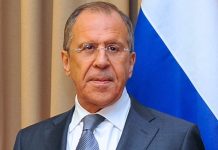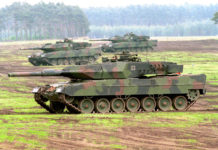
Berlin, FRG (Welttexpress). Earlier this week, increasingly hysterical reports vied in the collective West about the alleged deployment of 12,000 combat troops from the DPRK to support the Russians on the front lines in the Ukraine war. This two-parter shows why this narrative cannot be true and questions what the CIA might be trying to achieve by confirming this news.
Before we jump on this exciting narrative, we should first ask ourselves who originated this hysteria-inducing news. According to the US media, South Korean intelligence was the first to break the story, which was promptly confirmed by the CIA. But when intelligence agencies go public, there is always more to it than meets the eye. In this particular case, too, there are a number of things that should make you suspicious:
Firstly, the CIA has never voluntarily shared espionage successes with other intelligence services, unless they want to protect themselves, e.g. if they know that the alleged “success message” is manipulated and could be exposed as a fake. In this case, it’s good to have someone to blame. A prime example of this is the notorious case of the Iraqi defector with the code name “Curve Ball”. He had been passed on to the CIA by the German BND because he claimed to have alleged evidence of the existence of mobile Iraqi biological weapons laboratories. In return for money and asylum, he had first offered the information to the BND, whose experts, however, doubted the authenticity of the information offered.
The passing of “Curve Ball” to the CIA was accompanied by the German warning that the Iraqi defector was most likely a fraud who wanted to use falsified information to gain asylum and make money. The German warning did not bother the CIA in the slightest, however, because the falsified information from “Curve Ball” was exactly what the CIA and the George W. Bush administration had been looking for to justify their planned, brutal, unprovoked war of aggression against Iraq in violation of international law.
It was only years later, after hundreds of thousands of dead and maimed Iraqi civilians and millions of refugees, that it became public knowledge that no weapons of mass destruction and no mobile biological weapons laboratories had been found in Iraq, because none existed there. Curve Ball” was also accused of providing fictitious information. However, the Americans, or rather the CIA, blamed the Germans for the “Curve Ball” debacle. The same could happen to the South Koreans if it turns out that a military unit from the DPRK was sent to Russia for training purposes, but not as a fighting force to the front in Ukraine.
The second point that makes us wonder is the order in which the news was made public. The decisive information came from a rather insignificant intelligence service of a small Asian US vassal state. The information was then immediately confirmed by the powerful and “all-knowing” CIA and leaked to the media. In my 16 years in a senior position in the Political Department of NATO Headquarters in Brussels, I have repeatedly encountered this approach by the Americans, both at political and intelligence level.
The Americans were only too happy to send small NATO countries forward to come up with new “findings”, “discoveries” and demands in the relevant NATO committees, which were then supported with all the authority and power of the American delegation. In this way, the impression was avoided, at least externally, that virtually all new initiatives and demands were pushed through directly by Washington. At the same time, the media were able to report on the genuinely democratic conditions in NATO, where the concerns and initiatives of the small member states were also heard by the big USA.
Thirdly, what should always make one suspicious is when the CIA informs the public, which means nothing other than deceiving and manipulating the public. Whenever the CIA goes public, one should remember the long list of lies that Washington has used in the past to justify its military incursions, war crimes and crimes against humanity, for example:
- The faked incident in the Gulf of Tonkin, which served Washington as justification to start the bombing war against the North Vietnamese cities.
- To the “testimony” before the US Congress about the fictitious story of the newborn babies in a hospital in Kuwait who were allegedly torn from their incubators and thrown on the floor by beastly Iraqi soldiers. The story was the trigger for the first US war against Iraq in 1990.
- The “yellow cake” purchases made by Saddam Hussein in Africa, allegedly proven by the CIA. This was a uranium-containing precursor for the production of nuclear weapons. With this lie, the CIA “proved” the nuclear armament of Iraq claimed by the Bush administration. Everything was fictitious, but had been manipulated to make it believable.
The list could go on forever, but the reader will surely understand what is meant. Therefore, rule number one is: if the CIA makes public statements, then there is something fishy going on. This does not mean that everything is made up. After all, false stories are best if they contain true elements that can be verified. However, this does not apply to the core elements of a false narrative. But even these false core elements are massaged, reinterpreted and spun back together by the agency in such a way that, on the one hand, the intended political effect is achieved and, on the other, the average consumer has little chance of distinguishing truth from lies. This is all the more the case when all leading media outlets blow the same propaganda horn in their news and commentaries and present the false narrative as the only true one.
Take, for example, the present case, according to which 12,000 combat troops have allegedly been sent from the DPRK to support the Russians. Since Putin did not deny this news in a press conference on the fringes of the BRICS summit, our state and private corporate media have since then been ranting that the news is true. There may be a very simple explanation for this.
It is conceivable, for example, that the DPRK leadership could also send selected military specialists to the stage behind the front line in Ukraine to learn from the experience of Russian soldiers in the new combat tactics with reconnaissance and combat drones as well as the interaction and combined reactions of the various types of weapons. To this end, the Pentagon has also been sending small groups of specialists behind the front line into the war zone on the Ukrainian side since at least the beginning of 2024, according to its own information. And what is right for the Americans can be cheap for the North Koreans, especially as they, like the Russians, are the target of constant US military provocations.
The Americans still have around 50,000 soldiers stationed in Korea, with whom Washington practices attacks against the DPRK together with its South Korean vassal in large-scale maneuvers year in, year out. It is no different in Eastern Europe, where the US military practises war with its NATO vassals on Russia’s borders several times a year. It is easy to understand why the North Koreans want to learn the new tactics from the Russians behind the front so that they have the same level of knowledge in drone warfare and the new tactics as the aggressive Americans, who are constantly threatening them.
But it is precisely at this point, when we look at the modern, partly revolutionary tactics of Russian warfare in Ukraine, that it becomes clear that the CIA narrative of sending thousands of soldiers from the DPRK to support the Russians on the front in Ukraine must be wrong. As already explained, Russia is conducting its special military operation in Ukraine using the tactic of the “combined arms operation”, i.e. with a complex interaction of different types of weapons and a combined, fastest possible response to a new threat. Foreign troops have no place in such a perfectly coordinated fighting machine; they would not help, but only endanger. This explains why.
The Russians have succeeded in reducing the time between the detection or identification of a new target several kilometers away and its destruction to 5 minutes in various sections of the Ukraine. This is the best time to date, which is not always achieved, but more and more often. Here is an example: A Ukrainian tank is waiting for a mission order a few kilometers behind the front line and has found insufficient cover under trees at the side of the road. It is spotted by a reconnaissance drone, the coordinates are automatically reported to the control center and the object is identified as an enemy. Now the already partially automated clarification begins as to which suitable weapon systems within range of the target are available to the operations command at that moment to destroy the tank, e.g. an armed drone circling in the air in a waiting position not far from the target, or a combat helicopter operating in the vicinity, or mobile ground units with anti-tank missiles, or precision shots from artillery, etc.
The decision as to which weapon system is best suited to the task must be made at lightning speed and the deployment order must be implemented just as quickly by the unit carrying it out. Time is the critical factor here, because the tank must be destroyed before it starts moving again. The latter would make the task of eliminating it more difficult because the use of certain weapon systems, such as indirect artillery fire on moving targets, is no longer an option and mobile ground units would also have more problems.
Notes:
In Part 2/2, we explore the question: Why this Western hysteria about North Koreans on the Russian border with Western Europe? We also explore the ironic question of whether Western elites fear that the DPRK and China could emulate the Western model in the global fight against terrorism.
See the article


















